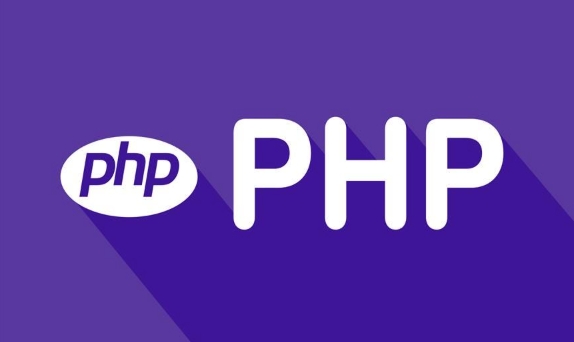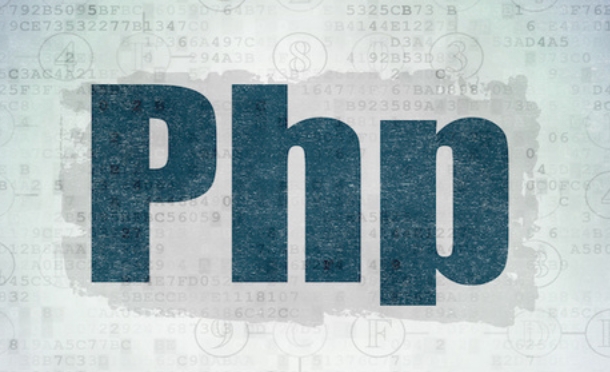The core of handling routing in modern PHP frameworks is to understand the unified entry mechanism and routing configuration methods. 1. The basic routing definition maps URLs to controller methods through routes.php or annotations, such as Laravel's Route::get(). It is recommended to centrally manage routes and use named routes to improve maintainability; 2. Routing parameters support dynamic path extraction and verification, such as using where() to limit parameter types to avoid injection risks; 3. Routing packets combine middleware to achieve permission control and modular management, reduce duplicate code and improve organizational logic capabilities; 4. Resource routing supports RESTful style, automatically creates standard CRUD routes, improves development efficiency and enhances collaboration consistency. Mastering these common practices allows you to flexibly respond to routing needs in different frameworks.

In modern PHP frameworks, the core is to understand its unified entry mechanism and routing configuration method. Most mainstream frameworks (such as Laravel, Symfony, Laminas, etc.) provide flexible routing systems that allow you to map URLs to the corresponding controller methods. Here are some practical practices to help you better understand and use the routing features in these frameworks.

1. Basic routing definition: from URL to controller
Modern PHP frameworks usually define routes through a routes.php or annotation. Taking Laravel as an example, you can write this:

Route::get('/about', [AboutController::class, 'index']);
This means that when the user accesses /about , index method in AboutController will be called. This structure clearly separates the URL and business logic.
suggestion:

- Centrally manage all routes for easy maintenance.
- Use named routes to facilitate link generation and redirection generation:
Route::get('/contact', [ContactController::class, 'show'])->name('contact.show');
- For simple GET/POST requests, just use the shortcut method provided by the framework.
2. Routing parameters and verification: not just passing values
Routing parameters are the basis of dynamic content, such as paths like /user/{id} . You can extract id from it and pass it to the controller.
Example:
Route::get('/user/{id}', [UserController::class, 'show']);Advanced skills:
- Add parameter validation rules to avoid invalid requests:
Route::get('/user/{id}', [UserController::class, 'show'])->where('id', '[0-9] '); - Use optional parameters (for frameworks such as Symfony):
user_profile: path: /user/{id}/{tab?} defaults: { tab: 'overview' }
Notes:
- Don't over-nest parameters, the URL should be concise and easy to read.
- It is best to limit the parameter types to avoid injection or error handling.
3. Routing grouping and middleware: Organizing more complex logic
As the project gets bigger, you need to group the routes, such as setting prefixes and middleware for the API and background respectively.
Laravel example:
Route::prefix('admin')->middleware('auth')->group(function () {
Route::get('/dashboard', [AdminController::class, 'dashboard']);
});benefit:
- Public prefix reduces duplicate code.
- Middleware unified control permissions, logs and other behaviors.
- Routes can be divided by module to improve maintainability.
Tips:
- When developing APIs, it is a good habit to use
api.phpto store interface routing separately. - Use middleware combinations reasonably, such as verifying login and role permissions at the same time.
4. Resource routing and RESTful style: write less and do more
Many frameworks support "resource routing" to help you automatically create standard CRUD routes.
Laravel example:
Route::resource('photos', PhotoController::class);
This statement will automatically generate the following route:
- GET
/photos→ List - GET
/photos/{id}→ View - POST
/photos→ Create - PUT
/photos/{id}→ Update - DELETE
/photos/{id}→ Delete
Advantages:
- Reduce repetitive labor.
- Comply with RESTful design specifications.
- It's easier to collaborate with other developers.
Basically that's it. By mastering these common practices, you can flexibly respond to various routing needs in different PHP frameworks. Although the grammar of each framework is slightly different, the ideas are basically the same, and the key is to understand the design pattern behind it.
The above is the detailed content of how to handle routing in a modern php framework. For more information, please follow other related articles on the PHP Chinese website!

Hot AI Tools

Undress AI Tool
Undress images for free

Undresser.AI Undress
AI-powered app for creating realistic nude photos

AI Clothes Remover
Online AI tool for removing clothes from photos.

Clothoff.io
AI clothes remover

Video Face Swap
Swap faces in any video effortlessly with our completely free AI face swap tool!

Hot Article

Hot Tools

Notepad++7.3.1
Easy-to-use and free code editor

SublimeText3 Chinese version
Chinese version, very easy to use

Zend Studio 13.0.1
Powerful PHP integrated development environment

Dreamweaver CS6
Visual web development tools

SublimeText3 Mac version
God-level code editing software (SublimeText3)

Hot Topics
 PHP Variable Scope Explained
Jul 17, 2025 am 04:16 AM
PHP Variable Scope Explained
Jul 17, 2025 am 04:16 AM
Common problems and solutions for PHP variable scope include: 1. The global variable cannot be accessed within the function, and it needs to be passed in using the global keyword or parameter; 2. The static variable is declared with static, and it is only initialized once and the value is maintained between multiple calls; 3. Hyperglobal variables such as $_GET and $_POST can be used directly in any scope, but you need to pay attention to safe filtering; 4. Anonymous functions need to introduce parent scope variables through the use keyword, and when modifying external variables, you need to pass a reference. Mastering these rules can help avoid errors and improve code stability.
 How to handle File Uploads securely in PHP?
Jul 08, 2025 am 02:37 AM
How to handle File Uploads securely in PHP?
Jul 08, 2025 am 02:37 AM
To safely handle PHP file uploads, you need to verify the source and type, control the file name and path, set server restrictions, and process media files twice. 1. Verify the upload source to prevent CSRF through token and detect the real MIME type through finfo_file using whitelist control; 2. Rename the file to a random string and determine the extension to store it in a non-Web directory according to the detection type; 3. PHP configuration limits the upload size and temporary directory Nginx/Apache prohibits access to the upload directory; 4. The GD library resaves the pictures to clear potential malicious data.
 Commenting Out Code in PHP
Jul 18, 2025 am 04:57 AM
Commenting Out Code in PHP
Jul 18, 2025 am 04:57 AM
There are three common methods for PHP comment code: 1. Use // or # to block one line of code, and it is recommended to use //; 2. Use /.../ to wrap code blocks with multiple lines, which cannot be nested but can be crossed; 3. Combination skills comments such as using /if(){}/ to control logic blocks, or to improve efficiency with editor shortcut keys, you should pay attention to closing symbols and avoid nesting when using them.
 How Do Generators Work in PHP?
Jul 11, 2025 am 03:12 AM
How Do Generators Work in PHP?
Jul 11, 2025 am 03:12 AM
AgeneratorinPHPisamemory-efficientwaytoiterateoverlargedatasetsbyyieldingvaluesoneatatimeinsteadofreturningthemallatonce.1.Generatorsusetheyieldkeywordtoproducevaluesondemand,reducingmemoryusage.2.Theyareusefulforhandlingbigloops,readinglargefiles,or
 Tips for Writing PHP Comments
Jul 18, 2025 am 04:51 AM
Tips for Writing PHP Comments
Jul 18, 2025 am 04:51 AM
The key to writing PHP comments is to clarify the purpose and specifications. Comments should explain "why" rather than "what was done", avoiding redundancy or too simplicity. 1. Use a unified format, such as docblock (/*/) for class and method descriptions to improve readability and tool compatibility; 2. Emphasize the reasons behind the logic, such as why JS jumps need to be output manually; 3. Add an overview description before complex code, describe the process in steps, and help understand the overall idea; 4. Use TODO and FIXME rationally to mark to-do items and problems to facilitate subsequent tracking and collaboration. Good annotations can reduce communication costs and improve code maintenance efficiency.
 Quick PHP Installation Tutorial
Jul 18, 2025 am 04:52 AM
Quick PHP Installation Tutorial
Jul 18, 2025 am 04:52 AM
ToinstallPHPquickly,useXAMPPonWindowsorHomebrewonmacOS.1.OnWindows,downloadandinstallXAMPP,selectcomponents,startApache,andplacefilesinhtdocs.2.Alternatively,manuallyinstallPHPfromphp.netandsetupaserverlikeApache.3.OnmacOS,installHomebrew,thenrun'bre
 How to access a character in a string by index in PHP
Jul 12, 2025 am 03:15 AM
How to access a character in a string by index in PHP
Jul 12, 2025 am 03:15 AM
In PHP, you can use square brackets or curly braces to obtain string specific index characters, but square brackets are recommended; the index starts from 0, and the access outside the range returns a null value and cannot be assigned a value; mb_substr is required to handle multi-byte characters. For example: $str="hello";echo$str[0]; output h; and Chinese characters such as mb_substr($str,1,1) need to obtain the correct result; in actual applications, the length of the string should be checked before looping, dynamic strings need to be verified for validity, and multilingual projects recommend using multi-byte security functions uniformly.
 Learning PHP: A Beginner's Guide
Jul 18, 2025 am 04:54 AM
Learning PHP: A Beginner's Guide
Jul 18, 2025 am 04:54 AM
TolearnPHPeffectively,startbysettingupalocalserverenvironmentusingtoolslikeXAMPPandacodeeditorlikeVSCode.1)InstallXAMPPforApache,MySQL,andPHP.2)Useacodeeditorforsyntaxsupport.3)TestyoursetupwithasimplePHPfile.Next,learnPHPbasicsincludingvariables,ech






